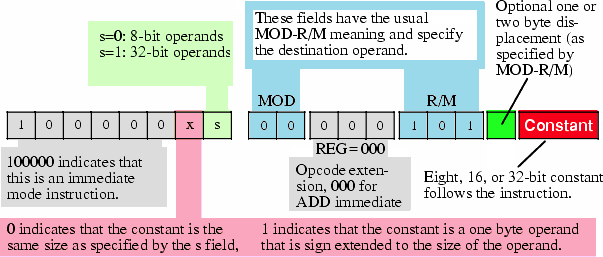-
MOD-REG-R/M and SIB bytes have no bit combinations to specify an immediate operand.
-
Instead, x86 uses a entirely different instruction format to specify instruction with an immediate operand.
-
There are three rules that apply:
-
Encoding x86 immediate operands:
